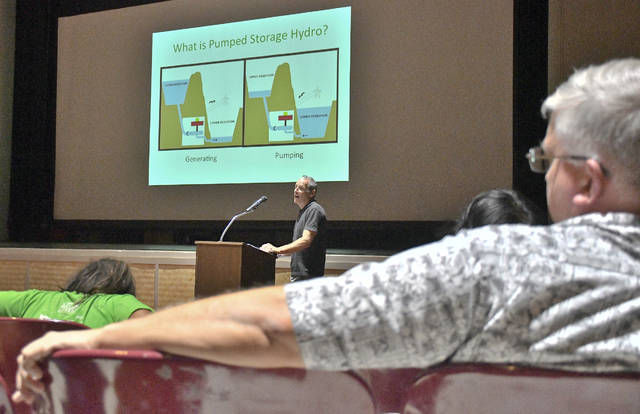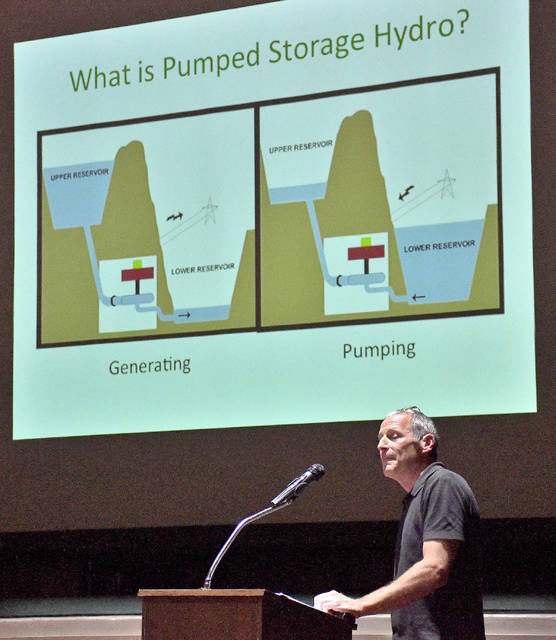WAIMEA — An integrated energy project on Kauai’s Westside could push the island past the newly set goal of 70 percent energy generation from renewable resources by 2030. The anticipated $80 million to $100 million Kauai Island Utility Cooperative pumped
WAIMEA — An integrated energy project on Kauai’s Westside could push the island past the newly set goal of 70 percent energy generation from renewable resources by 2030.
The anticipated $80 million to $100 million Kauai Island Utility Cooperative pumped storage hydro project would use Kokee Ditch, Puu Lua and Puu Opae reservoirs, as well as the reservoir on the Mana plain.
Staff members from KIUC presented an update on the planned project to about 50 people at the Waimea Theater on Tuesday evening.
“This is a project that’s very important for renewable energy,” said Rep. Dee Morikawa. “People around the state will be watching this.”
The pump storage hydro project stores power like a battery. It uses electrical power from photovoltaic panels to push water up a hill from a lower reservoir during the day. Then, in the evening that water flows back down the hill, through turbines.
“It’s a unique project because you need a steep hill and multiple water reservoirs,” Morikawa said.
The same water essentially gets shuffled back and forth through the system, generating power as it flows, said Jason Heinz, with KIUC.
“The general idea is no power generation when the sun is out, just pumping and storing, and in the evening or nighttime hours, we’ll have generation and distribution as needed,” Heinz said.
Water will be collected in Puu Lua reservoir and shuffled between that reservoir and the Puu Opae reservoir, and then enter a gravity fed irrigation system leading to the Mana plain for Department of Hawaiian Homelands, Agribusiness Development Corporation and Kekaha Agriculture Association lands.
It will also serve as a backup source for Menehune Ditch.
Creating the pumped storage hydro system will include repairing Kokee Ditch, rehabilitating the three reservoirs, two new sections of buried pipeline, and build two new powerhouses.
“One of the big things this project does is deliver irrigation water,” Heinz said. “The project doesn’t consume any water, it makes energy as the water is delivered for agriculture purposes.”
Concerns surfaced about trout that could be at risk with the project.
Heinz said more water in reservoirs, and water that is cooler and better quality, could help the fish.
“It should benefit the trout habitat, that’s a priority as we’re designing the project, to make sure the trout are protected,” Heinz said.
KIUC has been working on the project for a few years already and land agreements are expected to take two or three more months. Once those are solidified, three years of engineering, studying and permitting is expected.
All said and done, the project should take up to two years to build and construction is expected to begin in 2021 if the project moves forward according to plan.
If KIUC sticks to the 25-megawatt version of the plan, it could supply more than 15 percent of the islands’ electricity according to Heinz, and the project has a lifespan of 50 to 100 years.
Dave Bissell, KIUC president emphasized the project isn’t a done deal.
“Things have to keep looking good because at every phase we’re looking at the economics of this,” he said. “There’s a whole stack of dominoes that have to fall right for it to go forward.”




